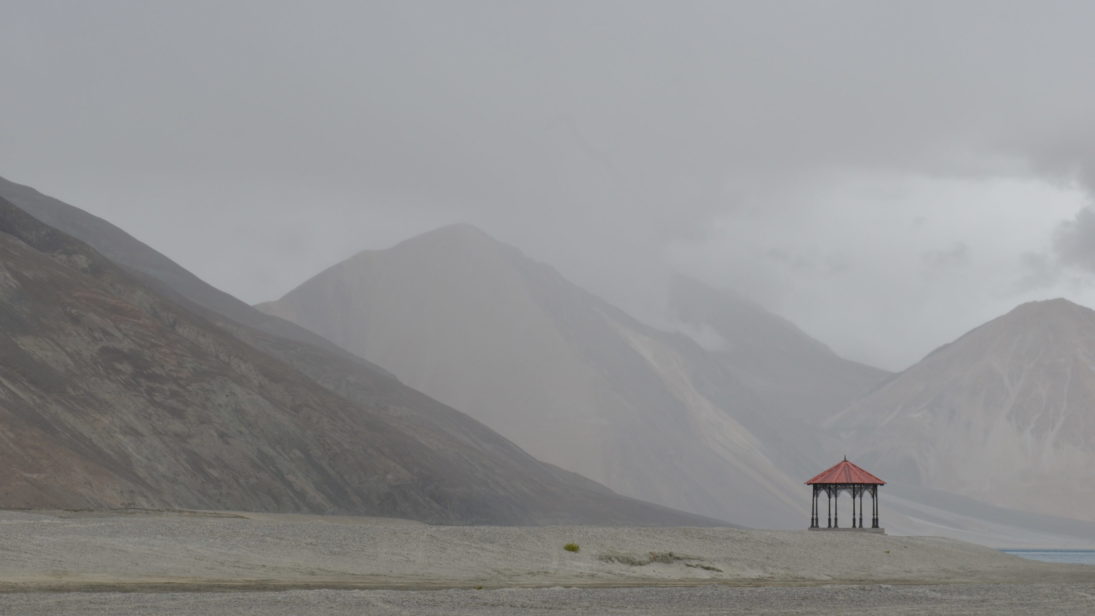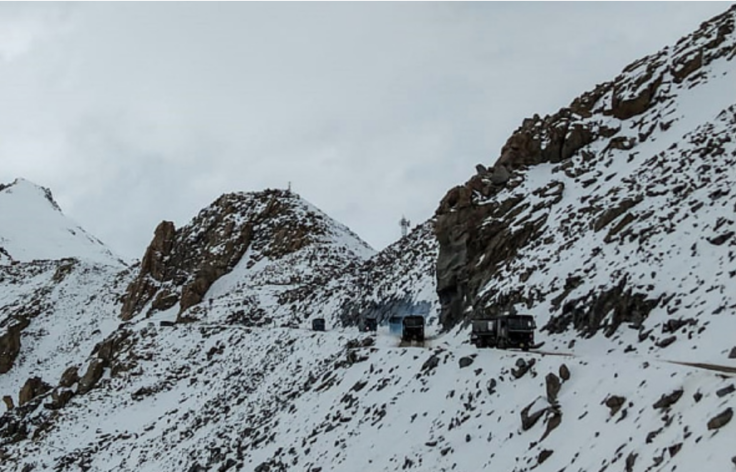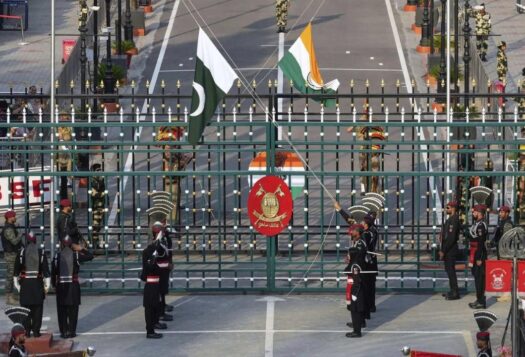
Since May 5, India and China have been witnessing tense border skirmishes and standoffs in Sikkim and Eastern Ladakh along the un-demarcated and disputed Line of Actual Control (LAC). Initially bringing back memories of the Doklam standoff in June 2017, the recent clashes resulting in the deaths of 20 Indian soldiers have seemed to hearken back to the more serious clashes, such as those at Nathu La in 1967 and even the 1962 border war.
As the tensions continue, analysts and commentators have provided numerous unconfirmed reasons for the renewed standoff and what has been seen by some as surprising Chinese aggression. This analysis has seen a growing focus on domestic factors, such as a potential weakening of President Xi’s position in the Chinese Communist Party (CCP) after COVID-19 or precipitating actions in India’s foreign policy as possible causes for the standoff. However, this article argues that the primary reason for China’s aggression is security and strategic concerns related to India’s road and infrastructure construction along the LAC rather than domestic factors.
Explanations for the Current Border Standoff
The primary reason given for the current India-China border standoff(s) is India’s building of roads and infrastructure along the LAC. China’s more favorable topography, metaled roads and other infrastructure to deploy troops and military equipment in the event of a war with India, has given it a strategic advantage on its side of the border. India is well aware of this disadvantage and under Prime Minister Narendra Modi, has prioritized building infrastructure to negate China’s advantage and is fast catching up. China perceives Indian construction, especially the nearly complete 255 kilometer Darbuk-Shyokh-Daulat Beg Oldie (DBO) (DSDBO) all-weather road, as attempts to mitigate China’s strategic and military edge along the disputed border, which prompted China to try to prevent India from further road building.
China perceives Indian construction, especially the nearly complete 255 kilometer Darbuk-Shyokh-Daulat Beg Oldie all-weather road, as attempts to mitigate China’s strategic and military edge along the disputed border, which prompted China to try to prevent India from further road building.
The DSDBO road connects Leh in Ladakh to the DBO military airbase, and allows troops and equipment to move to the border much faster. Control over the DSDBO road requires control over a ridgeline of the Galwan valley—the site of the deadly clashes on June 15—and control of the valley would provide access to Aksai Chin (where the Tibet-Xinjiang highway passes). West of Daluat Beg Oldie is Gilgit-Baltistan, part of Pakistan Administered Kashmir and part of the China-Pakistan Economic Corridor (CPEC). This has been one of the main reason’s for India’s objections to CPEC as it claims it is passing through disputed territory. China is anxious that India can use its strategic leverage in this area to disrupt CPEC which could have a disastrous impact on Belt and Road Initiative (BRI) and China’s socio-economic and political stability. As the flagship project of the BRI launched by Xi Jinping and with ties to China’s own security concerns in Xinjiang, threats to CPEC may also be viewed as threatening China’s unity, sovereignty, and territorial integrity concerns. The DSDBO road also raises China’s apprehensions regarding Aksai Chin, which China occupied after the India-China war in 1962. The Indian government’s revocation of Article 370 and statements on restoring Pakistan administered Kashmir and Aksai Chin into the Indian federation have exacerbated China’s distrust of India and India’s intentions.
Additional analysis for causes of the border conflict has pointed towards recent Indian actions as a source of China’s resentment, such as support for an independent inquiry into the origins of COVID-19 and sending two members of parliament to Taiwanese President Tsai Ing-wen’s virtual swearing-in ceremony in May. As recent chair of the World Health Organization (WHO), a separate argument is that China is also trying to pressure India not to back a change in Taiwan’s status in the World Health Assembly (WHA). However, India has been one of more than 100 countries calling for an independent inquiry. On Taiwan, India has held to a “one China” policy and shown reluctance to support Taiwan’s WHA bid. Finally, some have also pointed to India’s recent change in foreign direct investment laws meant to prevent “opportunistic takeovers” of Indian companies which is reportedly aimed at China. However, while China has invested around USD $30.7 billion in India between 2005-2019, this is still a fraction of its global investments of approximately USD $2 trillion.

Domestic factors affecting Foreign Policy
A separate argument has looked at China’s aggressive posturing at the border in the context of growing assertiveness in Chinese foreign policy in the wake of COVID-19. Indeed, there is precedent for China using external conflicts to distract from domestic issues—take for instance the 1962 border war in the wake of Mao’s disastrous “Great Leap Forward” setting him on a precarious position within the CCP. Similarly, one of the reasons cited for Deng Xiao Ping going to war with Vietnam in 1979 was diverting attention from China’s harsh economic conditions.
There is no doubt that Xi’s botched tackling of COVID-19 in the initial stages has undermined his position in the CCP and punctured his regime legitimacy built on technocratic competence. It has “underlined the worst facets of the Chinese command and control system of governance since President Xi assumed power,” and poses a significant threat to Xi’s personal legacy. Some have pointed to the current border standoff as part of a more aggressive foreign policy driven by fears of international perceptions of weakness in the wake of COVID-19. However, the LAC is a different story. The logistics required for a build-up of military equipment and amassing troops at a high-altitude and in multiple locations along the LAC starting as early as April indicate that plans for a greater military presence in the region may have been in the works for some time. Further, China’s downplaying of the crisis, and media reports indicating that China wants to deescalate suggest China is not trying to use the current standoff to galvanize nationalism to buttress domestic public support.
While China has in recent years mobilized anti-U.S. or anti-Japan sentiment for domestic support, it has not done the same with India. Since the end of the Cold War and especially in the twenty first century, China has used nationalism against the United States or Japan and to support ambitions to its East. The Chinese government has for instance fanned nationalist sentiments against Japan as part of the Senkaku/Diaoyu Islands dispute, and used the 1999 NATO bombing of the Chinese embassy in Belgrade to fan anti-U.S. sentiment. More recently, China has blamed the United States for the U.S.-China trade war and used nationalism against the United States to divert attention from the economic slowdown as Chinese netizens have voiced anger at U.S. attempts to contain China’s rise.
The logistics required for a build-up of military equipment and amassing troops at a high-altitude and in multiple locations along the LAC starting as early as April indicate that plans for a greater military presence in the region may have been in the works for some time.
Although there is compelling evidence that China has used external conflicts to drum up nationalism domestically, India does not seem to fall into this category—particularly as China remains focused on competition with the United States and territorial disputes to its East. While the nationalist Global Times—which caters more to an international audience—has published in-depth stories condemning Indian actions on the border, other Chinese language publications such as Xinhua, China Daily, and the People’s Daily mention the dispute in short reports in the back pages. Chinese netizens appear far more focused on Taiwan and Hong Kong which are considered more pressing issues.
China does not use nationalism against India because it does not consider India as a major security threat or a peer competitor. China’s main competition is with the United States, which it aims to surpass economically and militarily by 2049. India, on the other hand, is considered an inferior power due to the gaps in capabilities, such as economic and military power, between the two countries. China has not shied away from conveying this asymmetry to India in diplomatic meetings and interactions, and through government mouth pieces like People’s Daily, the Global Times and others. Simply put, China believes India is not worthy of great power status. China has, however, started paying more attention to India due to the latter’s burgeoning strategic relations with the United States. Plans for road infrastructure near the LAC, and the Modi government’s more nationalist stance have only deepened China’s distrust as well as concern and suspicion of India’s aims on the border.
Conclusion
An Indian Army spokesperson stated that Indian media’s “speculative and unsubstantiated reporting about these [military and diplomatic] engagements” is not helpful in resolving the border issue or current standoff. Similarly, specious diagnosis/analysis of the current India-China border standoffs and skirmishes may lead to policies or actions that further deteriorate bilateral relations, create misperceptions, and exacerbate mistrust between the two countries. As India considers its China policy for the future, an understanding of the motivations behind Chinese actions is critical. Conclusions that China is acting out of domestic weakness or in retaliation against India’s foreign or economic decisions, may risk leading “hawks” in each country gaining a bigger voice in decision-making or contributing to more military adventurism. A hardening of the positions in the two countries is likely to have negative repercussions not only on the India-China bilateral relationship but also for regional and even global security and stability.
***
Image 1: Ashok Boghani via Flickr
Image 2: STR/AFP via Getty Images


